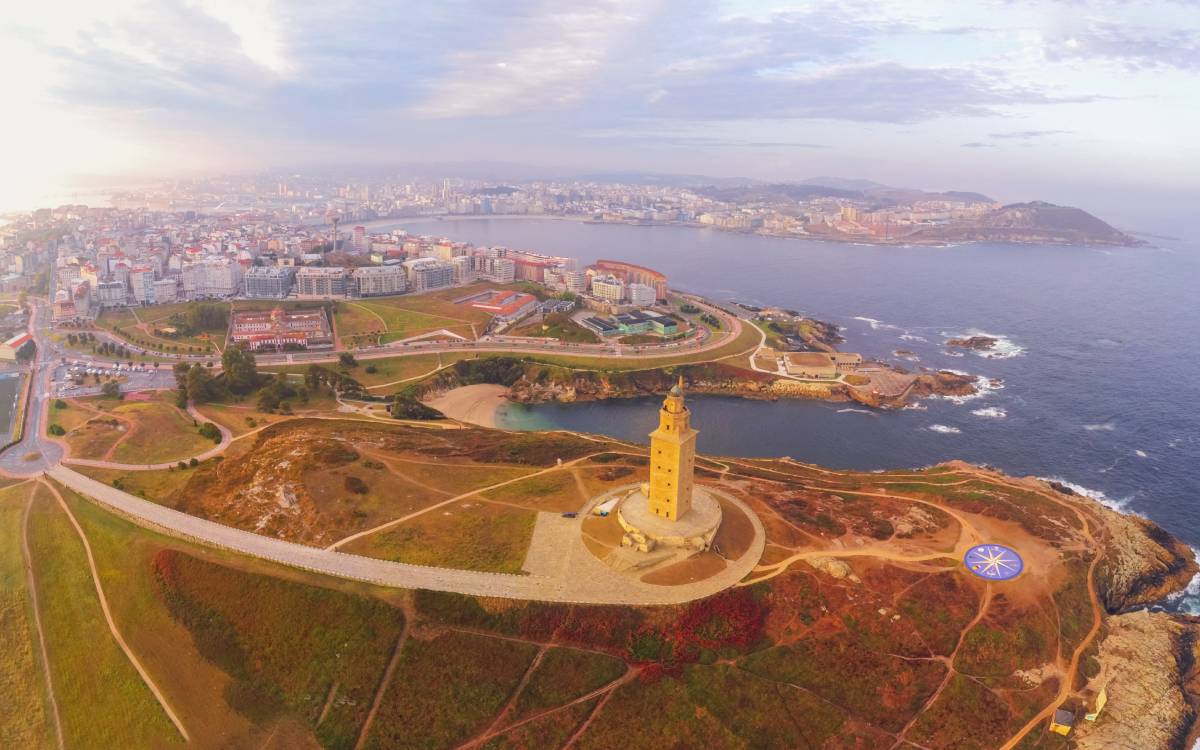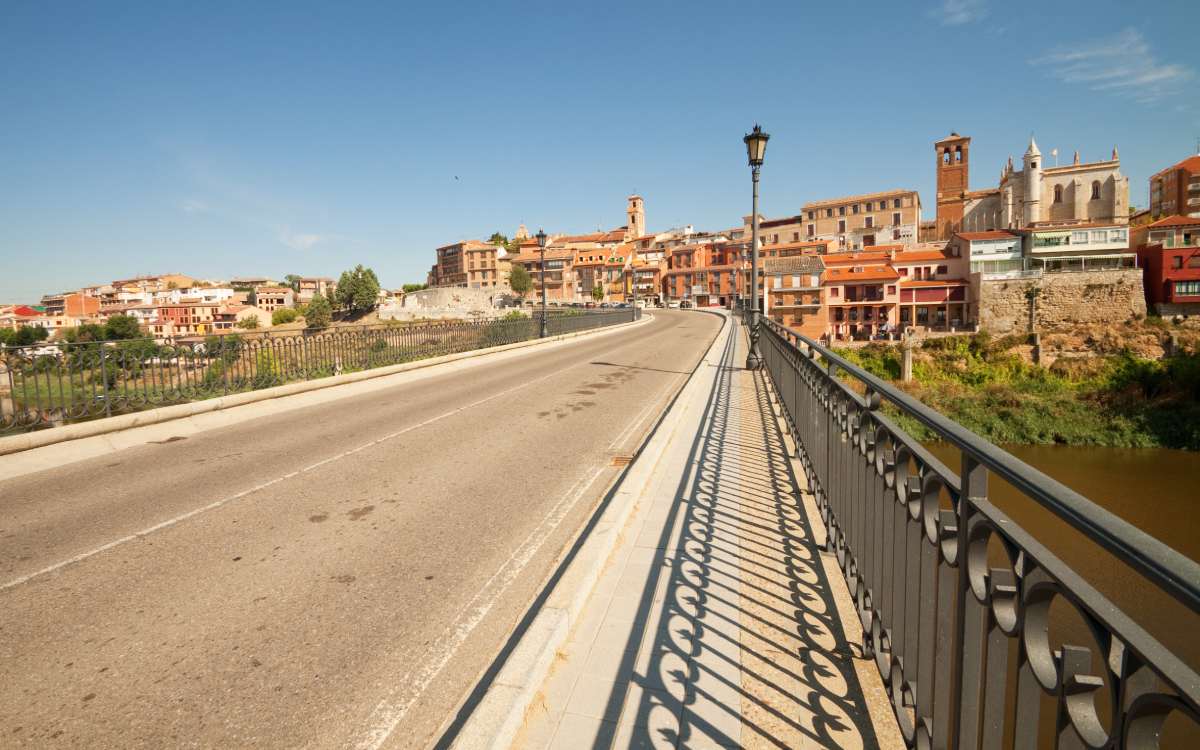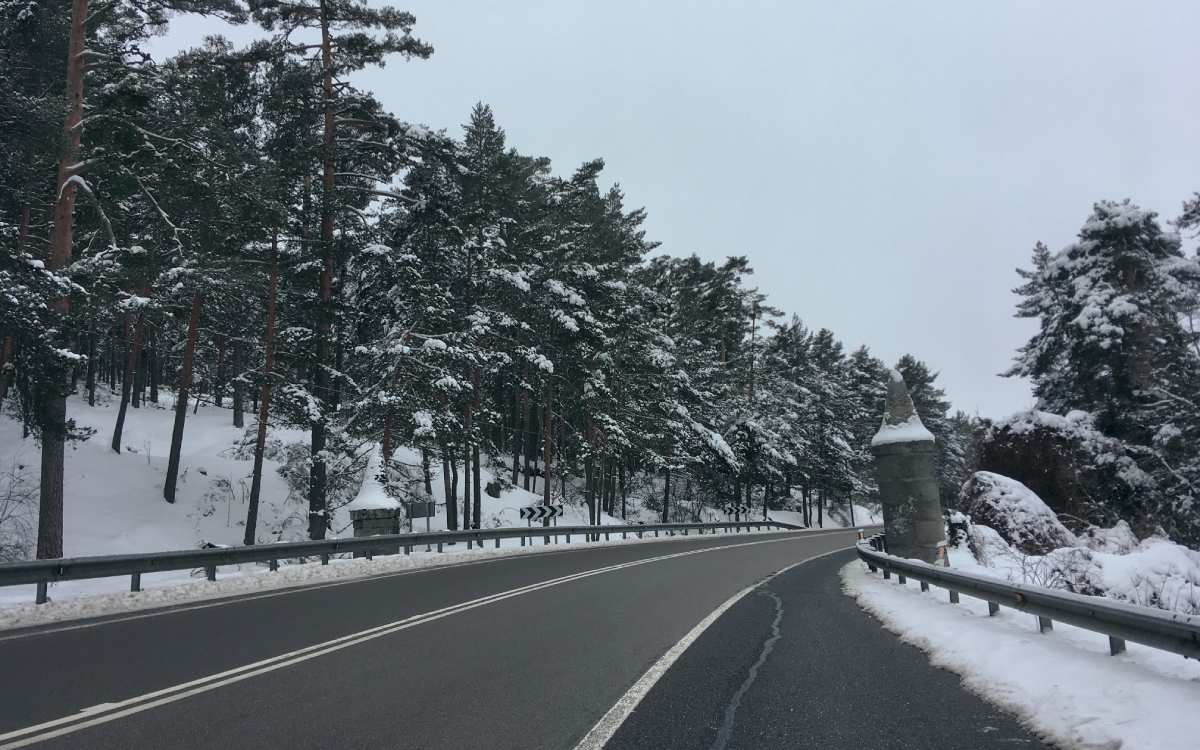
The Zero Kilometre of the Puerta del Sol in Madrid and the Tower of Hércules in A Coruña have never been so united. Although there is a significant distance between them, they are the starting and ending points of the ‘Spanish Route 66’, which makes them closer. This interesting path, called Route N-VI, follows a road full of history, flavor, and nature.

Puerta del Sol. | Shutterstock
Also known as the ‘Carretera de A Coruña’, the Nacional 6 is an important part of Spanish culture. This road covers 600 kilometres from its starting point at the central square in Madrid and the Tower of Hércules, the oldest lighthouse in the world still in operation.
Exploring these two locations is worth it, but there are more than 70 municipalities and 8 provinces between them that you should visit as well. Thanks to a new initiative under the slogan ‘Que. Falte. Mucho. Para. Llegar.’, you can do it in a dynamic and enjoyable way.
The initial concept was contemplated at first by its director, Xosé Ramón Nóvoa, when he visited the American Route 66, or ‘The Mother Road.’ During his journey, he realised the immense number of tourists this famous route attracts every year.
Besides, he was also inspired by an extremely successful route in Portugal known as the Rota N2. With this idea in mind, he thought about participating in Turislab, which accelerates touristic projects in Galicia. After months of hard work, this project won and has worked in real life since then.
Ver esta publicación en Instagram
The Route N-VI passport is requested by many tourists. This document includes useful information for those who dare to hit the road, such as the route guide and a Google Maps map where the main tourist attractions and the official stamping points are marked.
Besides, if you have at least 5 stamps of the authorised points in your passport, you can get your accrediting diploma. It will differ depending on the mode of transportation of your choice. It is also possible to get merchandising with the route’s logo.

Tower of Hércules in A Coruña. | Shutterstock
The route is organised around the Radial 6, and one of the main reasons behind it is that this road leads to Galicia, where the team lives. However, its geography is the greatest reason why it was chosen. The diversity of landscapes that can be found throughout these kilometres crosses the city of Madrid, mountains, the plains of Castilla y León, and, of course, the unmistakable green of A Coruña, a city with a lovely ocean view.
A very interesting fact about the ‘Spanish Route 66’ is actually the number that inspired it. It expands throughout 600 kilometres, and it’s the Nacional 6 road. The itinerary is based on a traffic map from 1960. But the N-VI was actually born in the 1940s, when the six radial roads that link the capital with the rest of Spain were built thanks to the Plan Peña.

Tordesillas. | Shutterstock
Route N-VI holds special places that suit every taste. The gastronomy and oenology found in the area are the main attractions that captivate most tourists.
However, nature is also important on this path. So are museums, historical monuments, and other picturesque spots, such as true roadside bars, abandoned gas stations, and ghost villages. Locations that have a special charm for some people.
On the other hand, this route encourages national tourism and slow travel. There are many possibilities to make a quick stop: Madrid, Arévalo, Medina del Campo, Rueda, Tordesillas, Benavente, La Bañeza, Astorga, Ponferrada, Villafranca del Bierzo, O Cebreiro, Lugo, Guitiriz, Betanzos, and A Coruña.

The ‘Spanish 66 Route’ crosses Segovia. | Shutterstock
By car, bicycle, van, or motorcycle, the choice is yours. No matter your means of transportation, the team behind Route N-VI suggests a few ways to complete this journey.
If you decide to do it on your own, you will get your passport and accrediting diploma, a guide with the stamping points marked and a map. But you can also let them take care of everything. They will organise your trip and adapt it to your preferences. Anyway, this ‘Spanish Route 66’ invites you to explore Spanish geography in a unique and exciting way.
You can also read this article in Spanish here.
Follow us on Facebook!